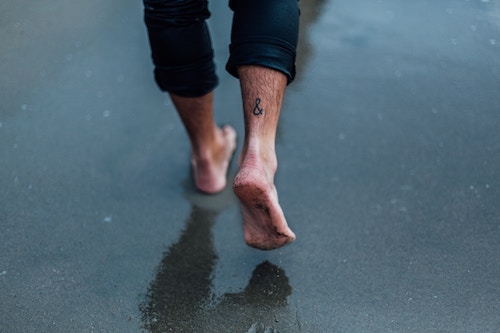Photo by Lucas Sankey on Unsplash
unpolished thoughts 7/8/2019
How do you learn to do the thing you’ve never done before?
On the first try, you are hopelessly inaccurate. Then you try to fix it – and you make it worse.
You try to fix it with will power, to make it work correctly.
You give yourself a direct order:
Do it right, goddammit!
Nope. No good.
So what will you do now?
It’s worth pausing to notice something that’s obvious if you stop to think about it:
If you’ve never done it before, you have no idea what doing it correctly feels like.
If you take that in, maybe you can see that an important part of your task is actually to get better at feeling what you are doing.
There’s a simple way to do that:
Slow. Down.
Depending on what you are doing, it might also mean breaking the thing you are doing into smaller pieces, and doing each of those smaller things slower and with more feeling.
This is a rough idea of the formula for the creation of an Awareness Through Movement lesson.
For example, instead of the entire complex action of walking, just notice that as you walk, your ankles must flex and extend.
So lie on the floor to make life easier (you’re not walking now, you’re just going to practice a small piece of walking), and flex and extend your ankles – slowly.
There are Awareness Through Movement lessons where this investigation is performed while lying on the belly and others where it is done lying on the back. The movements might be done with some part of the foot on the floor, or the feet might be raised into the air.
When you get rid of the effort of being upright and practice this small piece of walking, feeling more of what you do, you start noticing that you are doing more than you need to. There is no need to curl or uncurl the toes as you flex and extend the ankles – but for some reason you do.
As soon as you notice, what do you do then?
Do you give yourself a direct order?
“Stop doing that!”
You can try, but you will likely won’t have much success.
Instead, you can break this down too. Do the movement while not curling the toes – in other words, deliberately lift them. Do the movement while not lifting the toes – in other words, deliberately curl them.
But not only this – feel what it feels like to do each of these things. Feel how each of these actions are different. Each variation requires effort in different places, and the letting go of effort in different places.
Teach yourself to perform these actions smoothly without interrupting your breathing.
Teach yourself to switch from one variation to the other without stopping and stuttering.
Pretty soon you discover that the difficulty is not in the feet, it’s in the brain.
Are you doing what you think you are doing?
Eventually, you might extend your left foot down away from your head while lifting the toes – while simultaneously flexing your right foot and curling the toes under. Then you could switch both ankles and both toes, back and forth, back and forth, back and forth…
You may find yourself suddenly tensing or discover that your toes do the opposite of what you ask of them. You might start holding your breath. You might feel claustrophobic and wish you could get this whole damn thing over with as fast as possible (which is easy to observe from the outside because you start speeding up).
You don’t know how to do this!
So how will you learn?
Pause. Rest. Try it again – slower.
Do less and feel more. Try to get clearer in the feeling not the doing.
Remember that you are just practicing – maybe it would be better to say you are just playing around. Remember that there is no Olympic competition in the category of differentiating the toes from the ankles.
Actually, when you started you just wanted to improve the flexing and extending of the ankles, isn’t that right?
So try doing that much simpler action again.
After all those crazy variations with the toes doesn’t that feel easier now?
Now that your ankles glide so much more smoothly, what’s it like to stand up and walk?
Perhaps it feels different than you have ever felt walking before. If that’s true, then you have truly learned something – even if you still don’t yet walk exactly as you wish. You are closer now. If you wish to improve further, the new feelings you have already found will support your continued improvement.
Learning to do something new means learning to feel something new.
You can’t produce a new feeling with willpower. That’s just doing more of what you already know – harder.
Just remember, you can’t give yourself a direct order to “feel more.”
The process is a bit more indirect. Learning to feel more takes time.
It’s time well spent.
